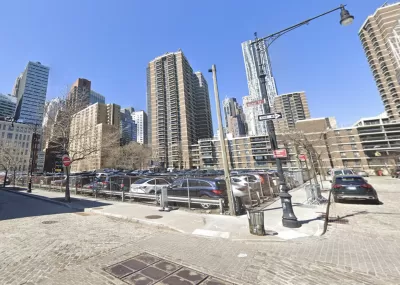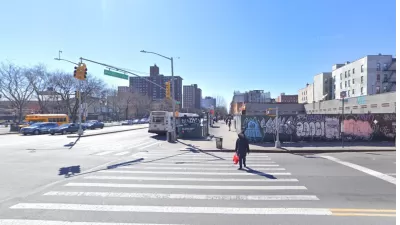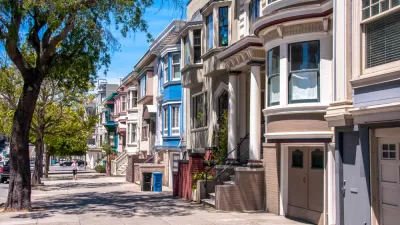A judge ruled against a decision by the Landmarks Preservation Commission to approve a 324-tower in the South Street Seaport Historic District, highlighting the tensions in a city facing a dearth of affordable housing.

A lot currently being used for parking in Manhattan’s South Street Seaport Historic District could be transformed into hundreds of units of housing—that is, if the parking lot wasn’t historically landmarked.
As Ginia Bellafante explains in The New York Times, when a developer proposed a 26-story building for the site at 250 Water Street, preservationist groups voiced their objections and sued, arguing that the building didn’t fit with the character of the historic district, could cause disruptions to a nearby school, and that the Landmarks Preservation Commission acted out of political interest when it approved the plan. “The proposal for the Water Street site includes 270 rental apartments, at least 70 of which would remain affordable, significantly, to those making an average of 40 percent of the area’s median income.” This means dozens of very low-income families “would qualify to live in a new building downtown, close to every conceivable means of public transportation and highly regarded public schools including Peck Slip, across the street.”
The preservationists won.
Bellafante calls this a “a particularly confounding example of the challenge to economically integrate wealthy neighborhoods in New York,” where community groups have obstructed the construction of new housing. With roughly 67,000 people sleeping in New York’s homeless shelters last November, Bellafante wonders, how does the aesthetic cohesiveness and ‘historic character’ of a neighborhood stack up against a desperate need for housing?
FULL STORY: In Affordable Housing v. Parking Lot, a Judge Chooses the Lot

Alabama: Trump Terminates Settlements for Black Communities Harmed By Raw Sewage
Trump deemed the landmark civil rights agreement “illegal DEI and environmental justice policy.”

Planetizen Federal Action Tracker
A weekly monitor of how Trump’s orders and actions are impacting planners and planning in America.

Why Should We Subsidize Public Transportation?
Many public transit agencies face financial stress due to rising costs, declining fare revenue, and declining subsidies. Transit advocates must provide a strong business case for increasing public transit funding.

Understanding Road Diets
An explainer from Momentum highlights the advantages of reducing vehicle lanes in favor of more bike, transit, and pedestrian infrastructure.

New California Law Regulates Warehouse Pollution
A new law tightens building and emissions regulations for large distribution warehouses to mitigate air pollution and traffic in surrounding communities.

Phoenix Announces Opening Date for Light Rail Extension
The South Central extension will connect South Phoenix to downtown and other major hubs starting on June 7.
Urban Design for Planners 1: Software Tools
This six-course series explores essential urban design concepts using open source software and equips planners with the tools they need to participate fully in the urban design process.
Planning for Universal Design
Learn the tools for implementing Universal Design in planning regulations.
Caltrans
Smith Gee Studio
Institute for Housing and Urban Development Studies (IHS)
City of Grandview
Harvard GSD Executive Education
Toledo-Lucas County Plan Commissions
Salt Lake City
NYU Wagner Graduate School of Public Service





























